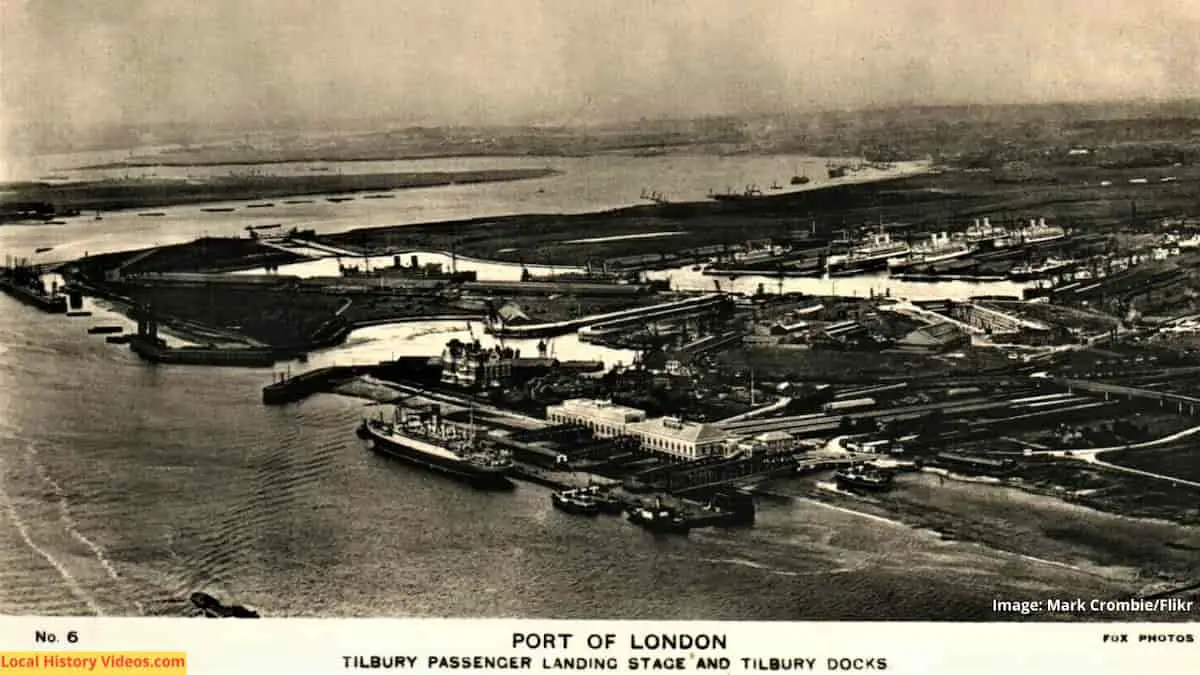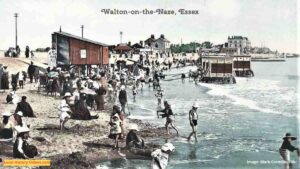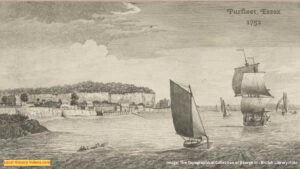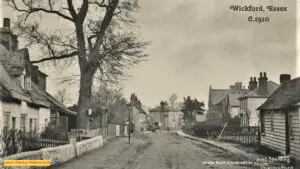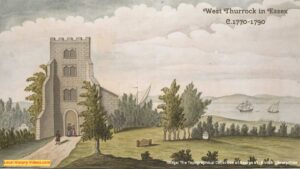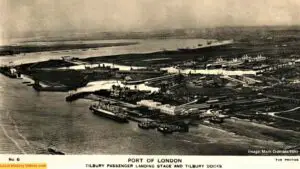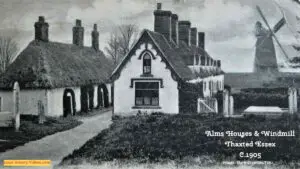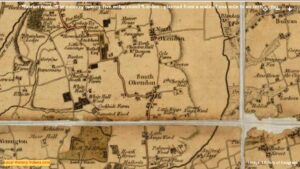Glimpse history through old images of Tilbury, Essex, England.
Dock Extension 1929
During the first stages of building a new extension to Tilbury Dock, which would allow the world’s largest ships to dock there, divers were helped into the waters to lay depth charges.
Creating extension to Docks at Tilbury, Essex (1929) – British Pathé on YouTube
New Dock Opening 1933
In 1933, Tilbury’s new dock extension was opened by Lady Ritchie, who was on board the Oronsay.
TRANSPORT: Opening of new dock at Tilbury (1933) – British Pathé on YouTube
Waste Paper Fire 1936
This is 1936 newsreel has brief footage of a fire at Tilbury Dock, caused by a fire of a large quanitiy of waste paper.
Waste paper fire in Tilbury (1936) – British Pathé on YouTube
Flood 1953
Flooding across the east of England in 1953 brought several members of the royal family out to meet forlorn communities.
About 2 minutes into this newsreel, following the scenes at Purfleet, Mablethorpe, Sutton on Sea, and the volunteers at Cambridge, we see Queen Elizabeth II walking along boards set on the muddy ground of a street at Tilbury, surrounded by a large crowd of residents. She then meets one of the affected households.
Queen Tours Flood Areas (1953) – British Pathé on YouTube
Leaving Tilbury in the 1970s
Lots of people lined up to wave goodby to relatives as they emigrated in the 1970s. People on board included the young, the old, and everything in between.
There’s also a shot of the waterfront and some of the buildings behind.
Emigrants – Tilbury (1970-1979) – British Pathé on YouTube
Tilbury Docks in 1980
First broadcast as part of the Thames TV programme Finding Out on 13th October 1980, these are a few seconds showing the docks and surrounding area from the air.
Tilbury Docks from the air – London – River Thames – 1980 – ThamesTv on YouTube
Historic Book
Extract from:
Stifford and its neighbourhood, past and present. [With] More about Stifford
by William Palin
Published in 1871
Pages 9 – 10
The Roman road and the Pilgrim roads have been previously discussed. The latter can still be partially traced, although widening roads to accommodate increased traffic and the removal of old pollard oaks have, in some cases, disrupted the clear traces that were visible about forty years ago, which is within the author’s local knowledge.
The primary change in more modern roads has been their overall improvement, albeit at an increased cost. This improvement resulted from surveyors in more recent and enlightened times gaining a better understanding of the concept of a highway, which signifies a road elevated above the roadside.
Arthur Young traversed our roads in 1767, opting for the old Roman road throughout. However, the roads were not maintained in the state he found them. He described one particularly challenging stretch from Billericay to the King’s Head at Tilbury, which was narrow, rutted, and overgrown by trees. This road was nearly impassable, and travelers often encountered chalk wagons stuck in the ruts. Despite the hardships faced by travelers, the construction of a turnpike road from Chelmsford to Tilbury Fort was opposed by the local inhabitants, even though farmers in the area were cultivating substantial farms worth over a thousand pounds a year, yet they seemed content with the state of the roads. Young expressed his frustration with the roads and the opposition to the turnpike in this area.
One cannot dismiss the subject of roads without a word of more modern means of traveling. Old inhabitants will remember the time when traveling here was a very deliberate affair. Thirty years ago Kerr’s Horndon coach was the only means of reaching London, which latter few of the old inhabitants of that time, after spending a long life here within twenty miles, had ever seen.
“The coach” left Stifford at 8 A.M., reaching the Bull, Aldgate, well known for the venerable Mrs. Nelson, at 11.30, if the roads were propitious, by Barking; returning at 4 P.M., fares 48. 6d. and 6s. 6d. Then the ‘Star’ and ‘Diamond’ fleets calling at Grays pier. And now, the pride and agent of civilization, the rail.
Tempora mutantur, nos et mutamur in illis, for along with other matters connected with the highways a curious reason has been assigned for the bad roads of former times, viz. that the farmers, getting the fee simple of a field by a happy crop, did not care to invite the non-resident rector and squire, by good roads, to look after tithe and rent.
“They wor fine times for farmers then, and fine goin’s on too,
One crop o’ mustard ud buy the land wi’out much ado.
Landlords and rectors they was birds o’ which you only heard,
They’d send for rent or tithe, but twarn’t often they appeared;
For that matter the tenants didn’t werry much wish they should,
And they kept the old roads most as bad as ever they could.”
The Old Essex Clerk.
No diversion of roads, nor, worth mentioning, of field-paths in the last
forty years.
More about Essex
- Old Images of Essex, England
- Old Images of West Hangingfield, Essex
- Old Images of Purfleet (Purfleet-on-Thames), Essex
- Old Images of Wickford, Essex
- Old Images of West Thurrock, Essex
- Old Images of Walton-on-the-Naze, Essex
- Old Images of Tilbury, Essex
- Old Images of Thaxted, Essex
- Old Images of South Ockenden, Essex

